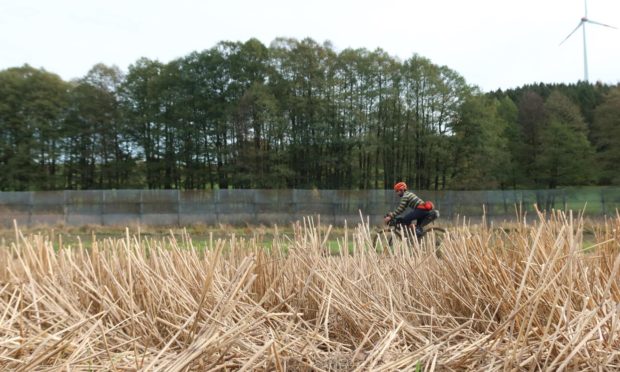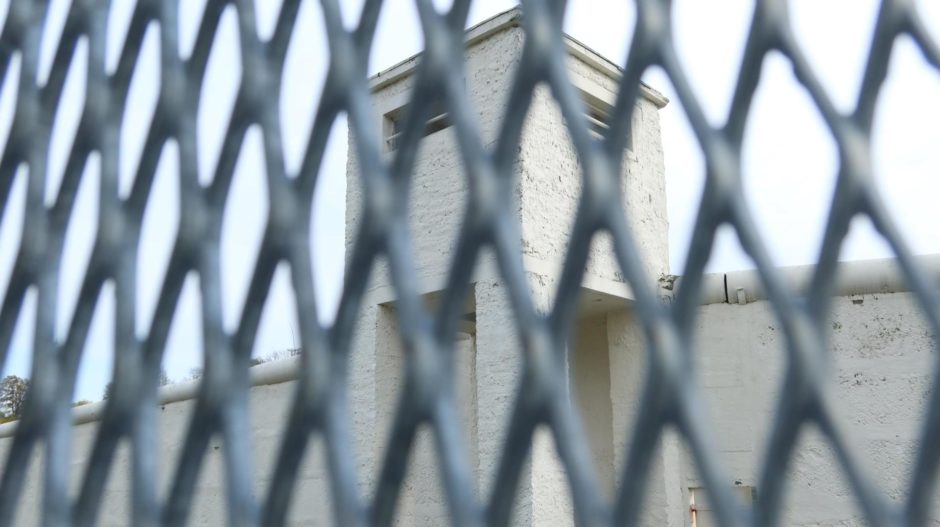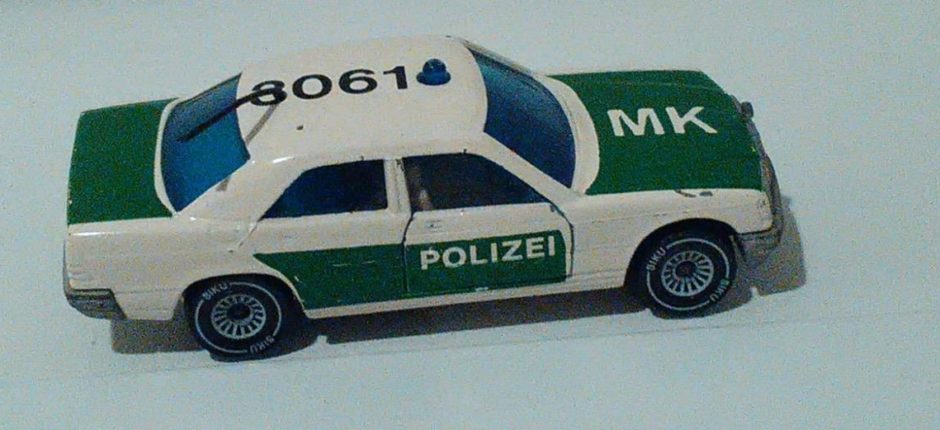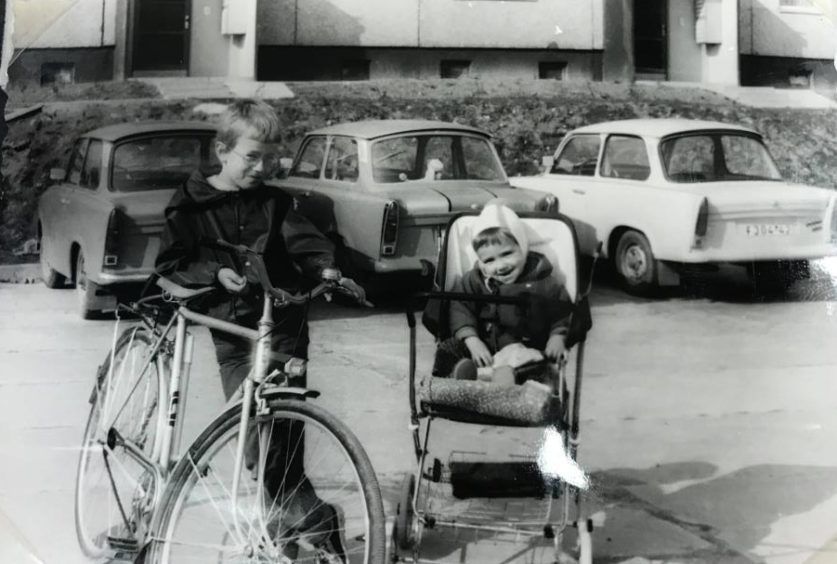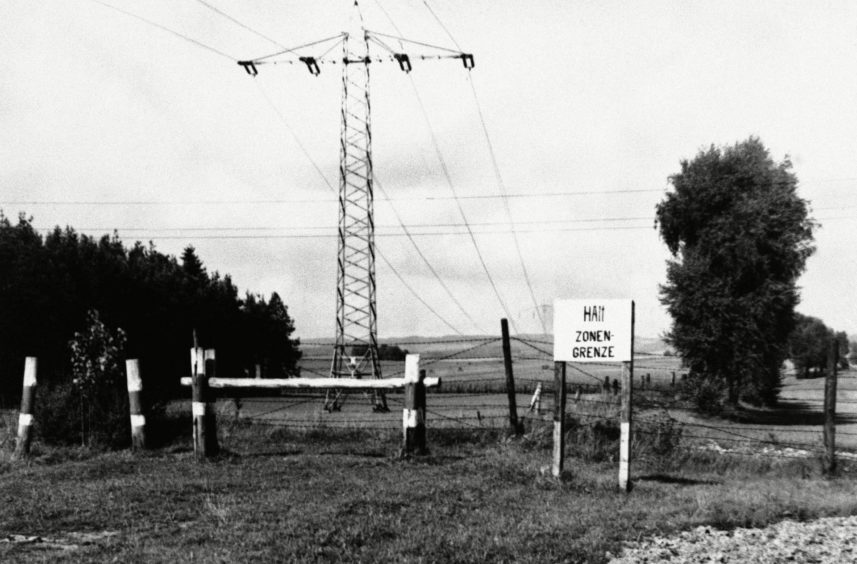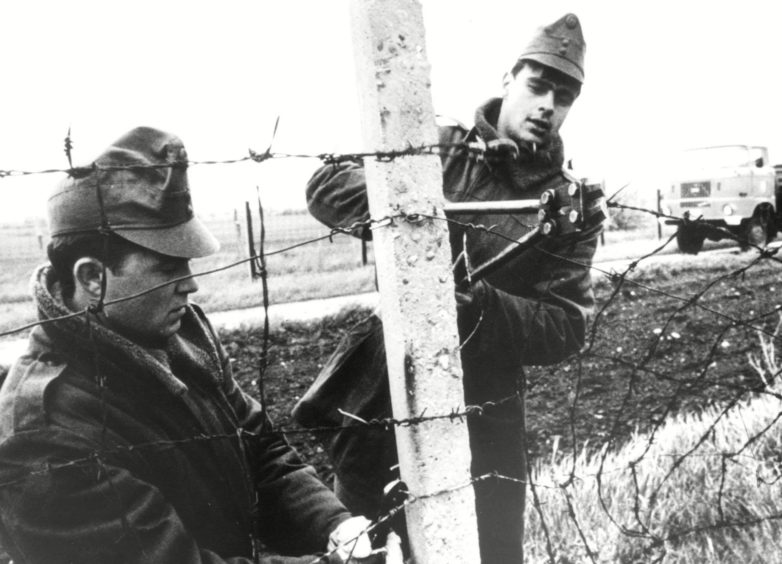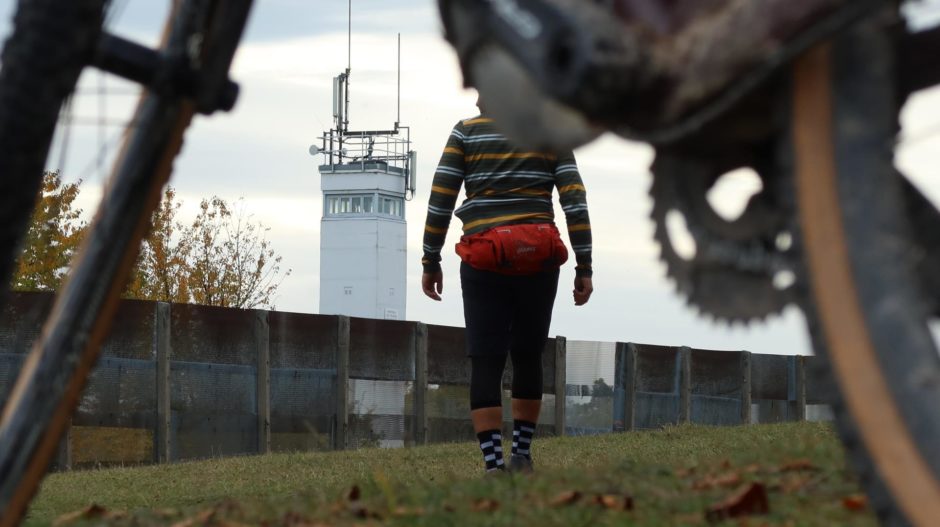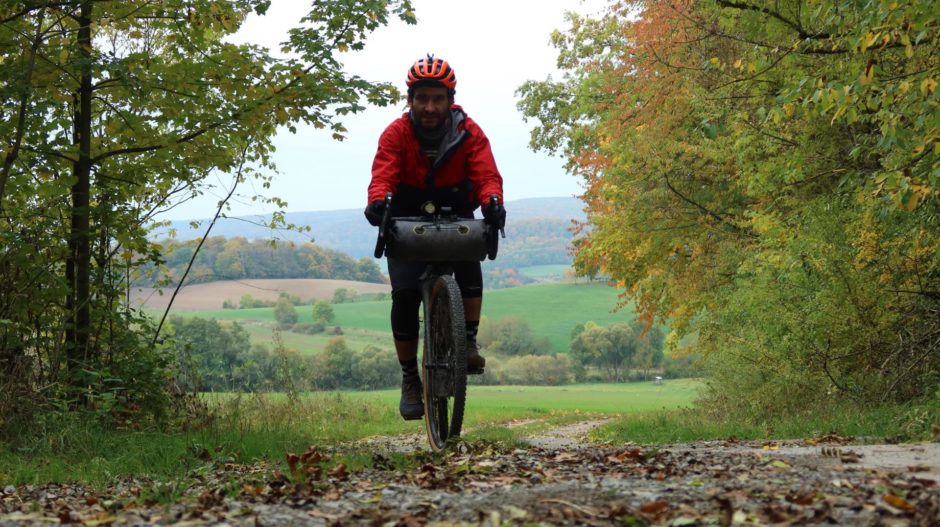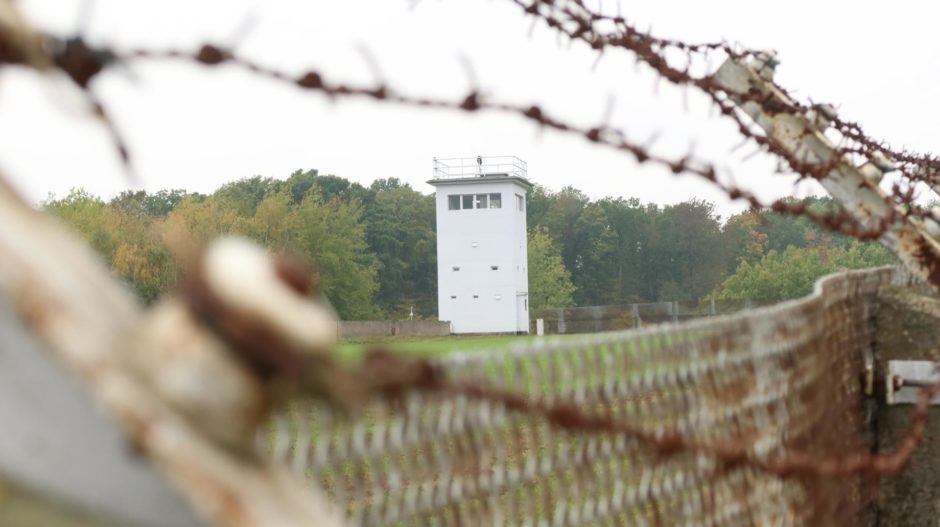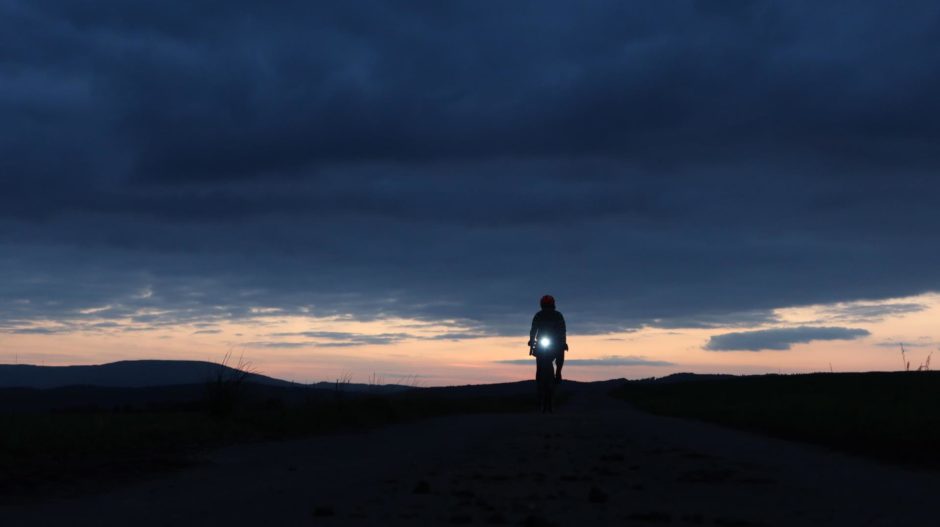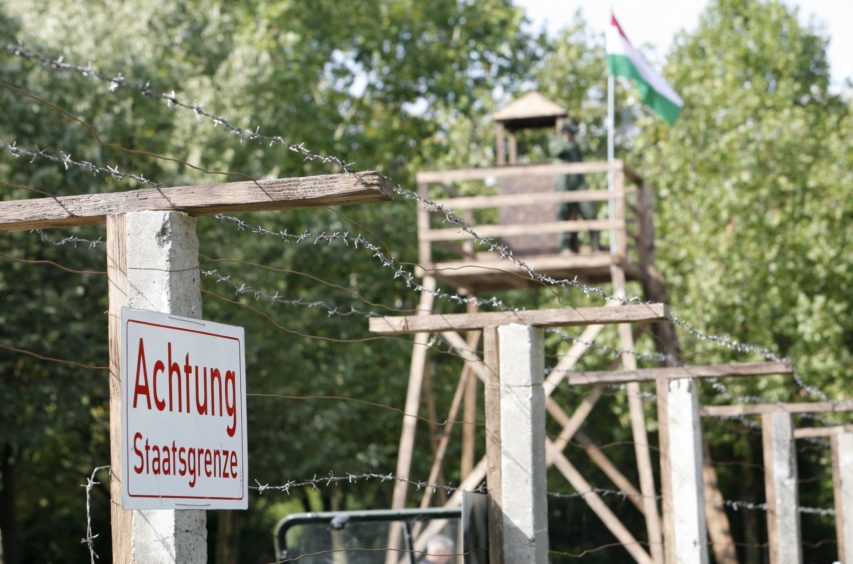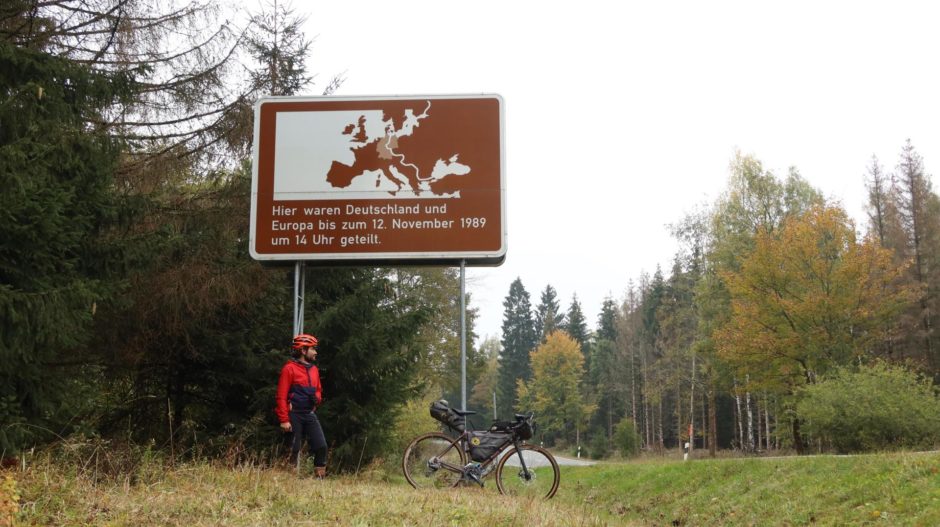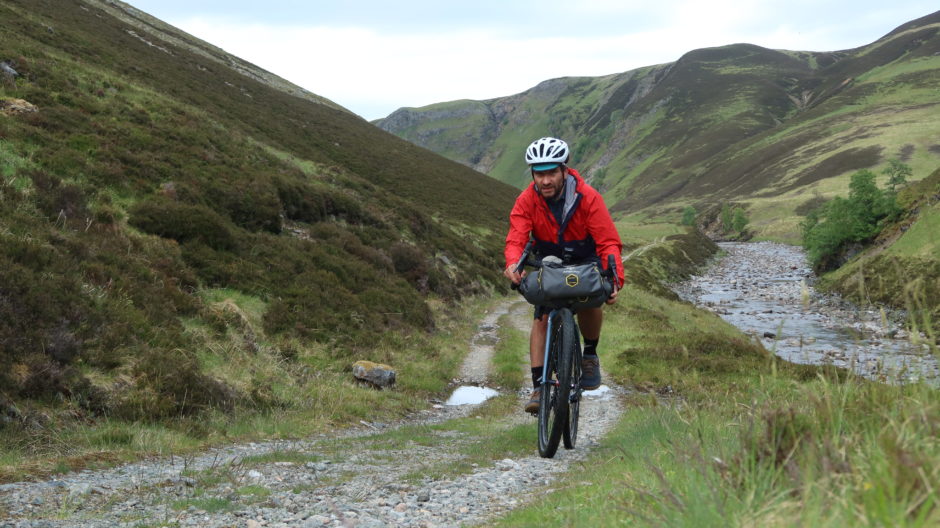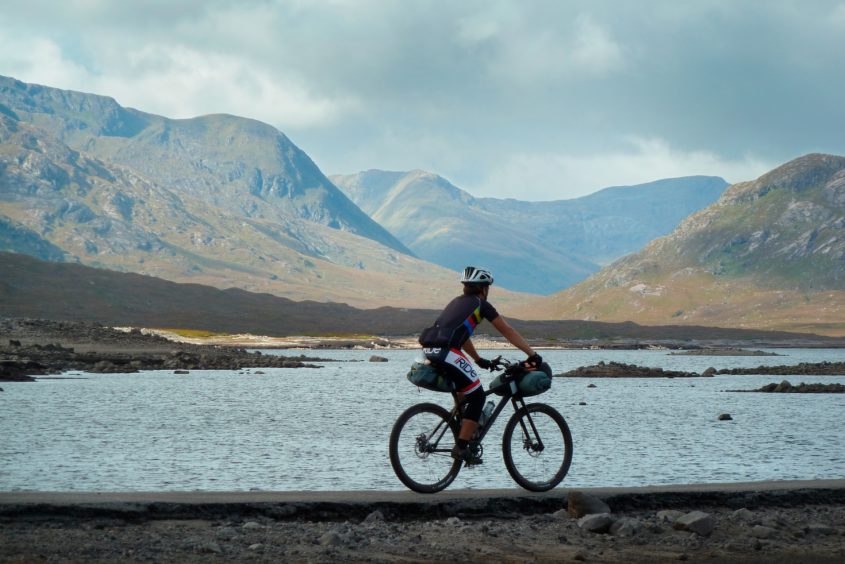East-Germany born Markus Stitz – the founder of Bikepacking Scotland – has launched a new film about cycling the former Iron Curtain. Gayle Ritchie finds out more.
Markus Stitz was just 10 years old when the Berlin Wall fell and the Iron Curtain was lifted on November 9 1989.
It’s a date which will be forever etched on his memory – a date which symbolises freedom and unity.
Markus and his parents were among thousands of East Germans to cross the border for the first time in their lives following the announcement that they were free to travel.
Markus – who is working with the Cateran Ecomuseum to create cycling itineraries across the Cairngorms, Perthshire and Angus in 2021 – had always been curious about what was “on the other side” but, until November 10 that year, had never been permitted to find out.
Early that morning, his parents packed him into the back of their tiny Trabant and headed into West Germany.
They stopped in the town of Duderstadt, where the excited young Markus browsed a toy shop.
It was here that he set eyes on a miniature green and white police car – the same shade of green as the family’s Trabant.
“That was the first thing I bought with the 100 Deutsche Mark we had been given as a welcome gift from the government when entering the west of the country for the first time,” he recalls.
“For many years afterwards, that toy car served as a reminder – as the materialised memory of the day in November 1989 that changed my life.”
Life behind the Iron Curtain
The Iron Curtain was a boundary dividing Europe from the end of the Second World War in 1945 until the end of the Cold War in 1991.
Prior to November 9 1989, East Germans were kept under tight surveillance, with very little opportunity to travel; anything that lay to the west was unknown territory.
Markus, who was born in the East Germany town of Heiligenstadt in the Eichsfeld region, experienced the division caused by the former border first-hand as a child.
“The church was still a powerful force here, even after years of communist oppression,” he recalls.
“It was a region ripped apart by the border, parts in West Germany, parts in East Germany.
“Growing up so close to the border, illegally watching television programmes from West Germany, was one of the only ways to stay informed.
“My sister wasn’t home, and my brother had to serve his military service.
“If things had escalated, my brother would have been sent to fight, and I guess that explains the tension in my parents’ home.”
Sat in front of the TV on November 9 1989, Markus’s family heard the announcement that East Germany was lifting restrictions on travel across its border with West Germany.
“The relief was massive!” he says. “There are only a few events that are worth calling lifetime events. The opening of the border is one of mine. It left me with hope.
“I can still vividly remember the following morning, on November 10 1989.
“I stood there, grabbing my small elephant, a soft toy which had been with me all the time. There was a sense of urgency in the air. My parents were in a hurry.
“Breakfast was rushed, and I found myself on the back seat of the car.
“Instead of going to school we were off on our way to Duderstadt, to a new, unknown world. School could wait until next week.”
The family was stuck in a long tailback after leaving home at 7am with thousands of East Germans all heading west.
“We didn’t know if the newfound freedom was there to last,” says Markus. “We all felt a bit overwhelmed.”
Iron Curtain Gravel Trail
In October 2020, 30 years after the reunification of Germany, Markus embarked on a 700km bike journey along the former Iron Curtain, finding little evidence of the heavily fortified border, with the exception of a few road signs, stones and plaques and some rundown watchtowers which still dominate the landscape.
“It’s the beautiful countryside and my personal memories as a child growing up very close to the border that inspired me to design the Iron Curtain Gravel Trail, and to document my journey in the film Grenzerfahrungen (Borderline Experiences)”, says Markus.
“While the whole Iron Curtain stretches 6,800km from Finland to Greece, I picked a 687km section that’s cyclable in one or two weeks, and is well connected to public transport.
“With gravel bikes becoming the new gold standard in bikepacking (off-road cycle touring), my intention was to design a route that suits gravel bikes. But a mountain bike of any kind will be equally fun.”
The route offers a great off-road adventure with stunning landscapes, breathtaking views and the chance to explore an important chapter of European history on two wheels.
The Iron Curtain Gravel Trail is available to download free on bikepackinggermany.com
Check out the film, Grenzerfahrungen, here.
Emotional journey
Making the film was a very emotional journey for Markus.
“When I rode the route I was pretty overwhelmed at times, as it brought home to me what a significant event the fall of the Iron Curtain was,” he says.
“As a child I had no idea that the border to the west was so close, or what it looked like.
“What I knew, though, was that I couldn’t use or wear the toys, sweaters and shoes that frequently arrived from our relatives in the west anywhere in public, or at my grandparents’ place in the 5km zone along the border.”
Since November 1989, Markus says he has “benefited hugely” from having the freedom to travel and work in many different countries.
“But, most importantly, I am allowed to express my opinion on things,” he says.
He moved to Scotland in 2009 after falling in love with Edinburgh during the world-famous festival.
“Over the years I’ve learned that the freedom I was given on November 9 1989 was something others had fought hard for,” he says.
“People, not just in East Germany, have been imprisoned or lost their lives, but their actions have enabled me to have the life I have, and I am very grateful for that.
Over the years I’ve learned that the freedom I was given on November 9 1989 was something others had fought hard for.”
Markus Stitz
“When I cycled along the former border line I saw plenty of plaques dedicated to people who tried to escape and got killed or heavily injured.
“I often thought what it would be like if I, at the age of 41, was stuck behind that fence.”
Significance of the route
On a personal scale, the route brought Markus closer to his dad.
“His love for the area inspired me to cycle along and close to the European Green Band, which has since become one of the most untouched and wild areas in Germany.
“He got injured in a bicycle accident when I was cycling around the world in 2015, and died a few weeks later in hospital.
“We had very different lives, but what connected us was an interest in the history of the Eichsfeld region.
“My dad had loads of books about the area, as he was travelling within it, repairing people’s TVs, even when the border existed.
“I was also very close to my grandmother who lived in Schwobfeld with us, and most of my family lives in the area too, so riding the route was nice.
“On a more global level, people have heard of the German division and the Cold War, and events like the Second World War that led to it, but I think it’s hard to grasp what it was really like until you have seen the border fortifications and plaques.
“The route combines bikepacking, wonderful countryside and an important chapter in history, and shows you a Germany off the beaten path.”
Scottish connections
Markus made his very first bikepacking trip in 2014 – the self-supported Highland Trail route – when the discipline was relatively unknown and, he says, “underground”.
He tackled the route, which explores 550 miles of some of the most remote, inhospitable terrain in the Scottish Highlands, on a single speed bike.
The following year, in 2015, Markus set off to become the first person to bikepack round the world on a single speed bike – 21,186 miles through 26 countries – all in one gear!
Back in Scotland, he continued to push his body to its limits with epic bikepacking trips.
In 2016, realising bikepacking could – and indeed should – become a bigger, more accessible sport in Scotland, Markus founded his company Bikepacking Scotland.
This allowed him to market the sport via tourism organisations and create new bikepacking and cycling routes across Scotland, all of which would be free to access online and ride.
These included the Capital Trail, the Central Belter (Scotland’s longest off-road bikepacking trail), Fife Coastal Trail, Go East Lothian Trail, West Highland Rover, West Island Trail, Reiver Raid, the Wild About Argyll Trail, the Drover’s Trail and the Highland Perthshire Gravel Trail.
Museum without walls
Markus is working with the Cateran Ecomuseum in 2021 to create cycling itineraries across the Cairngorms, Perthshire and Angus as part of the “Travel For All Our Tomorrows” scheme.
“Most of my projects have been driven by my interest for history, and this new project adds another, very exciting layer to this approach,” says Markus.
“With climate change fast approaching, this project will kickstart a campaign to position the ‘museum without walls’ as one of Scotland’s premier car-free holiday destinations.
“I look forward not only to develop new cycling routes as part of the project, but also the next film project connected with it.”
For more details, see bikepackingscotland.com
